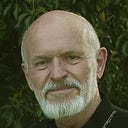Member-only story
Mary Welsh Hemingway — How It Was: A Life
“ Without delay we set off in a comfortable car with chauffer to drive in fog and rain over twisty mountain roads to Salzburg where, on a restaurant door, we saw the first sign — JEWS NOT SERVED HERE…”

I’ve written about Mary Welsh Hemingway quite a bit, but invariably as the fourth wife of Ernest Hemingway, which is inevitable of course, but it’s not the full story, as Mary Welsh was a fine journalist long before she ever set eyes on Hemingway.
Mary was perhaps the best thing that ever happened to Ernest Hemingway, no doubt prolonging his life at a time, back in Cuba after the war, when his health was in decline. Without Mary at his side The Old Man and the Sea could not have been completed, or, after his death when she was determined (and not through personal gain) to ensure the publication of Islands in the Stream, and A Moveable Feast, which was hugely generous considering she was quite literally left to clean up the dreadful mess Hemingway left after his suicide.
At the very start of her lovely, and beautifully written, 1976 autobiography, How It Was, Mary returns to her roots in northern Minnesota, and her beloved father:
“ In the 1890s there remained at least 600,000 acres of unsurveyed timberland in northern Minnesota, and my father, not yet turned twenty-one, decided to acquire 160 acres of that virgin forest under what he recalled as the Squatters’ Rights Law. With rough maps to guide him, a man blazed [marked] a tree, paced off 160 rods east, north, west, and south from the tree, posted a notice claiming the land, built a shelter and thus, with few further formalities, became a landholder with title to the tract.”
The piece of land was one-hundred-sixty miles south of the Canadian border, on which, some sixty miles from his nearest neighbour, and spent the summer getting to know the land, and the trees and the birds, and an ever increasing number of folks doing what he was doing. At the end of summer he went home to the village of L ‘Anse, Michigan (close to Lake Superior) where he “ succumbed” to the beauties of one Adeline Beehler. They married at the village church on July 9, 1902.
